The 1977 Lincoln Memorial pennies are part of the series minted from 1959 to 2008. These coins are still common today, and it’s possible to find some in everyday circulation.
Three U.S. Mints produced the 1977 cents:
- Philadelphia (no mint mark)
- Denver (“D” mint mark)
- San Francisco (proof coins with “S” mint mark)
While most 1977 pennies have modest value, some well-preserved or rare pieces can sell for much more than face value.
1977 Penny Value Chart
| Condition | 1977 No Mint Mark Penny | 1977-D Penny | 1977-S Proof Penny |
|---|---|---|---|
| MS 65 | $18 | $24 | – |
| PR 65 | – | – | $5 |
History of the 1977 Penny

The Lincoln penny, first introduced in 1909, was designed to commemorate the 100th anniversary of Abraham Lincoln’s birth. Notably, it was the first U.S. coin to feature a real historical figure. The original design, both obverse and reverse, was the work of renowned engraver Victor D. Brenner.
Who Was Abraham Lincoln?
Born in 1809, Abraham Lincoln was the 16th President of the United States. Before his presidency, he worked as a lawyer and quickly became a rising figure in American politics. His most significant legacy was issuing the Emancipation Proclamation on January 1, 1863, a vital step toward the abolition of slavery, which became law in 1865.
Lincoln was re-elected in 1864, but his second term was tragically cut short when he was assassinated in 1865. Despite his short time in office, Lincoln left a lasting legacy—he abolished slavery, reformed agriculture, established the national banking system, and even created the Secret Service.
1977 Lincoln Penny Types & Mintage
| Location | Type | Mintage |
|---|---|---|
| Philadelphia | 1977 No Mint Mark Cent | 4,469,930,000 |
| Denver | 1977 D Cent | 4,149,063,300 |
| San Francisco | 1977 Proof Cent | 3,251,152 |
| Total | 8,622,244,452 |
Redesign of the Lincoln Cent (1959–2008)
In 1958, to honor the 150th anniversary of Lincoln’s birth, the U.S. Mint announced a redesign of the penny’s reverse. A competition was held, and out of 23 submitted designs, Frank Gasparro’s concept was chosen. He was the assistant engraver at the time.
Gasparro’s winning design depicted the Lincoln Memorial on the reverse, with a tiny image of Lincoln seated between the monument’s pillars—making the Lincoln cent the first American coin to feature the same person on both sides.
This Memorial reverse remained in circulation from 1959 to 2008, until it was replaced in 2009 by the Lincoln Bicentennial series and later by the Shield cent in 2010.
Features of the 1977 Penny
The obverse of the 1977 Lincoln penny
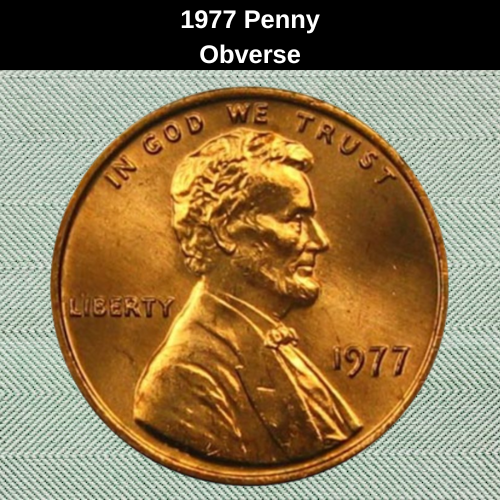
The obverse (front) of the 1977 Lincoln penny was originally designed by Victor D. Brenner in 1909 to commemorate Abraham Lincoln’s 100th birthday. At the center, you’ll find a left-facing profile of President Lincoln, framed above by the motto “IN GOD WE TRUST.”
To Lincoln’s left, behind his back, appears the word “LIBERTY,” while the minting year (1977) is positioned in front of his chest. If applicable, the mint mark (such as “D” for Denver or “S” for San Francisco) is located just below the date. Finally, Brenner’s initials “VDB” can be seen near the rim at the shoulder line, a subtle tribute to the coin’s original designer.
The reverse of the 1977 Lincoln penny
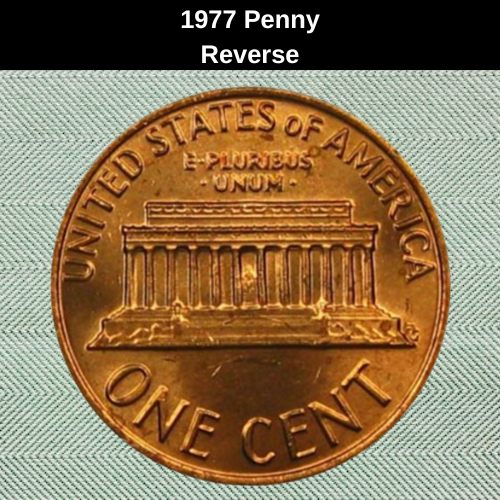
The coin’s contemporary reverse design was created by Frank Gasparro to honor the 150th anniversary of Abraham Lincoln’s birth. What makes this design unique in American coinage is the detailed depiction of the 16th President’s statue inside the Lincoln Memorial building.
Above the Memorial, the phrase “E PLURIBUS UNUM” is centered, while “UNITED STATES OF AMERICA” arcs along the upper edge, framing the central image. The denomination “ONE CENT” appears below the Memorial. On the right side of the Memorial, you’ll find Gasparro’s initials (FG) subtly placed.
1977 Lincoln Penny Specifications
- Face value: One cent ($0.01)
- Shape: Round
- Composition: 95% copper, with tin or zinc
- Diameter: 0.7480 inches (19.0 mm)
- Thickness: 0.0598 inches (1.52 mm)
- Weight: 0.0353 ounces (3.11 g)
- Edge: Plain
Additional Features
The high copper content gives the penny its characteristic color, which can vary between red, brown, or a blend of both tones. The coin maintains a plain rim and the standard round shape common to US pennies.
1977 Lincoln Penny Grading
The 1977 Lincoln pennies were minted in three locations: Philadelphia (no mint mark), Denver (D), and San Francisco (S). This includes both regular circulation strikes and proof coins. The grade of each coin reflects its condition and rarity.
- The best quality Philadelphia pennies typically rank up to MS 66.
- The highest-grade Denver pennies have been found in MS 68.
- For proof coins from San Francisco, collectors seek the perfect PR 70 grade, representing the best preservation in the series.
Sheldon Grading Scale for 1977 Lincoln Pennies
| Grade Number | Grade Name |
|---|---|
| 1 | Basal State-1 |
| 2 | Fair |
| 3 | Very Fair |
| 4, 5, 6 | Good |
| 7, 8, 10 | Very Good |
| 12, 15 | Fine |
| 20, 30 | Very Fine |
| 40 | Extremely Fine |
| 50 | About Uncirculated |
| 60 | Mint State |
| 65 | Mint State |
| 70 | Mint State |
Tip: Checking your coin’s grade using a detailed grading guide is essential to accurately determine its value.
1977 Penny Value Guide
1977 No Mint mark Penny value
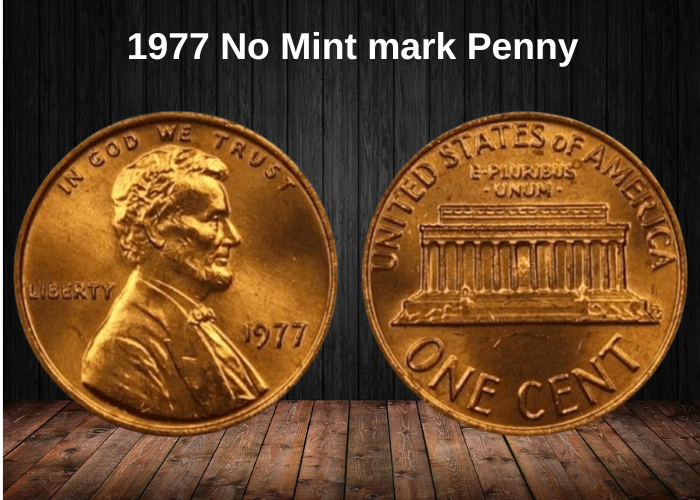
The Philadelphia Mint produced pennies in very large quantities in 1977, making these coins common and widely available. While their face value remains $0.01, the numismatic value depends on the coin’s grade.
Here’s a breakdown of estimated values for Lincoln cents from Philadelphia by grade:
| Grade | Approximate Value |
|---|---|
| MS 63 | $3 |
| MS 64 | $6 |
| MS 65 | $18 |
| MS 66 | $47 |
| MS 67 | $200 |
| MS 68 | $3,150 |
1977 D Penny value

output. These coins are common, but higher-grade specimens can be valuable, especially the rare red-toned MS 68.
| Grade | Approximate Value |
|---|---|
| MS 63 | $8 |
| MS 64 | $14 |
| MS 65 | $24 |
| MS 66 | $60 |
| MS 67 | $240 |
| MS 68 | $7,000 |
- Lowest-grade coins typically sell for around 5 cents.
- The rare red MS 68 penny sold at auction for $7,050 (Heritage Auctions).
1977 S Penny value
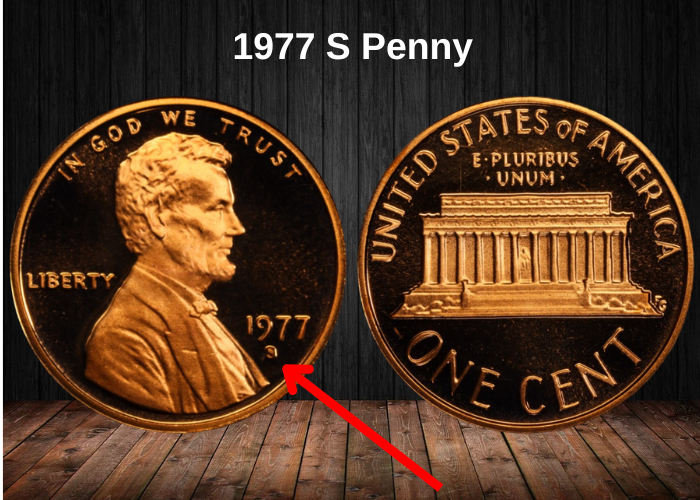
The San Francisco Mint issued only proof pennies in 1977. Their value varies significantly depending on the grade:
| Grade | Approximate Value |
|---|---|
| PR 61 | $5 |
| PR 62 | $5 |
| PR 63 | $5 |
| PR 64 | $5 |
| PR 65 | $5 |
| PR 66 | $6 |
| PR 67 | $7 |
| PR 68 | $8 |
| PR 69 | $22 |
| PR 70 | $1,800 (typical) |
- Top auction record: One PR 70 proof penny sold for $7,050 at Heritage Auctions.
Rare 1977 Penny Error List
Double-Punched Mint Mark (RPM)
- Occurs because mint workers manually punched the mint mark.
- Sometimes the mint mark was struck twice (re-punched), causing overlapping or misaligned mint marks.
- Collectible error coins.
- Typical value: $3 to $15.
BIE Error
- Visible as a raised line resembling a capital “I” between the letters B and E in the word LIBERTY.
- A distinctive Lincoln penny error, including on 1977 issues.
- Typical value: $5 to $10.
Lincoln cent struck on a dime planchet
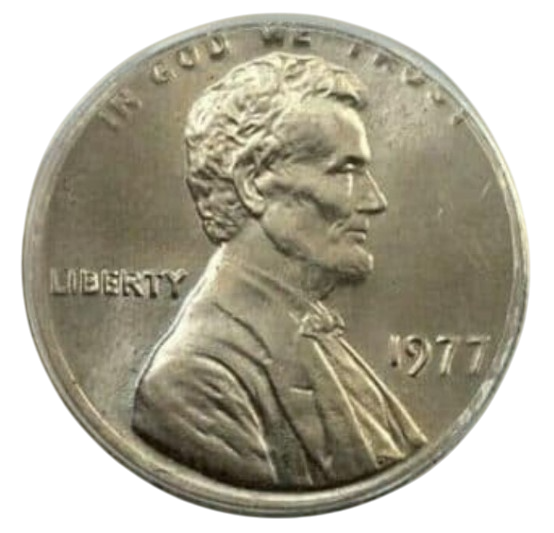
This error happens when a penny is struck on a dime planchet by mistake. In this situation, the wrong blank metal disk gets fed into the coin press, which is set for a specific thickness, resulting in an error coin.
Lincoln cent struck over a Roosevelt dime
This double-struck coin shows both presidents’ portraits on the front, but Roosevelt’s bust is upside down. You’ll also notice the year “1977” is struck twice at different angles. Essentially, both the images and inscriptions appear misaligned and oddly positioned.
Off-center
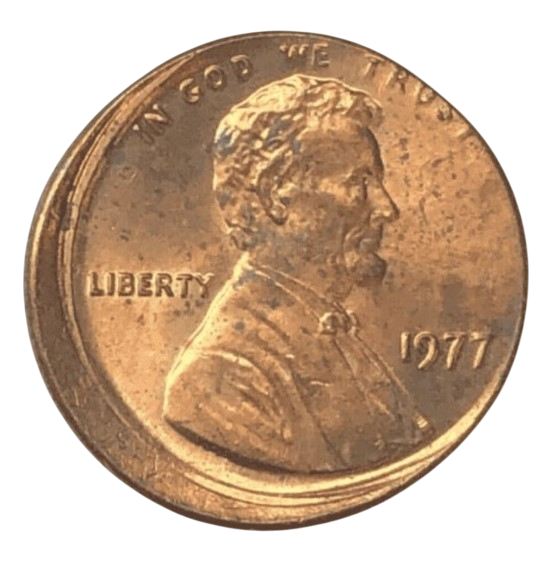
This error occurs when the coin strikes are not perfectly centered on the planchet. As a result, the penny has one edge that is wider than the opposite side. Depending on how off-center the strike is, parts of the design or lettering may be missing. Coins with this error vary in value based on the severity of the misalignment.
Where to sell your penny?
Now that you know the value of your penny, you might be wondering where to sell it. Don’t worry: here’s a guide to some of the best online platforms where you can easily sell your coins, along with their advantages and disadvantages.
Discover the best platforms for selling coins online (pros and cons).
1977 Lincoln Penny FAQ
1. What is the typical value of a 1977 Lincoln penny?
Most 1977 pennies in circulated condition are worth just their face value (1 cent). However, uncirculated coins graded MS60 to MS65 can range from $0.50 to $5, depending on condition and mint mark.
2. Which mints produced the 1977 Lincoln penny, and how many coins were made?
- Philadelphia (no mint mark): approximately 4.5 billion minted
- Denver (D mint mark): approximately 3.4 billion minted
- San Francisco (S mint mark, proof only): about 7.7 million minted
These large mintages make the 1977 penny very common.
3. Are there any known error coins or varieties for the 1977 penny?
While there are no major well-known errors like doubled dies, some minor varieties include:
- Repunched mint marks (RPMs) especially on Denver coins
- Die cracks or cuds
- Off-center strikes
- Minor planchet flaws
Such errors can add modest premiums, typically between $10 and $100 depending on severity and condition.
4. What is the metal composition of the 1977 penny?
The 1977 penny is composed of 95% copper and 5% tin and zinc, the standard alloy used for pennies from 1909 to 1982 (excluding 1943 steel cents). It weighs about 3.11 grams.
5. How can one distinguish between circulation strikes and proof pennies for 1977?
- Circulation strikes show normal wear and are found in everyday change.
- Proof pennies (1977-S) were specially struck for collectors with polished dies and mirror-like surfaces, often graded PR65 or higher.
Proofs generally carry higher values, ranging from $3 to $20+ depending on grade.
6. Are there any notable design features or changes in the 1977 penny?
No significant design changes were made in 1977. The coin features:
- Obverse: Abraham Lincoln’s portrait by Victor David Brenner
- Reverse: The Lincoln Memorial by Frank Gasparro
This design continued unchanged from 1959 through 2008.
7. How can collectors best identify valuable 1977 pennies?
- Use a magnifying glass or loupe to inspect for RPMs, die cracks, or doubling.
- Check coin weight and color for authenticity.
- Consider submitting high-grade coins to grading services like PCGS or NGC for certification.


















































